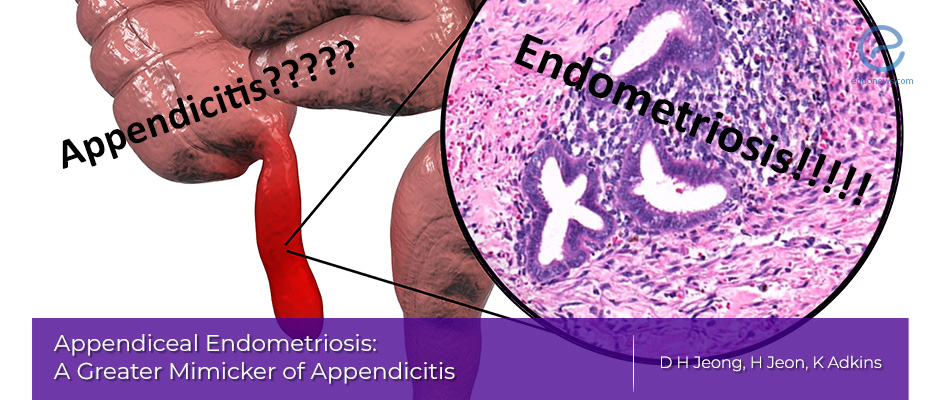Appendiceal endometriosis
May 12, 2020
Endometriosis in the appendix is a quite rare condition.
Key Points
Highlights:
- Appendiceal endometriosis is a rare condition, and its diagnosis is strongly correlated to clinical features due to the difficulties of imaging techniques.
Importance:
- The exact diagnosis of appendiceal endometriosis is only possible by histological examination.
What's done here:
- The authors represent and discussed their case, a woman without a previous diagnosis of endometriosis, and was operated with the diagnosis of appendicitis in their Surgery Department.
Data:
- The incidence of appendiceal endometriosis has been reported to be as low as 0.05% and as high as 0.8%.
- There is no correlation between the location of endometrial foci and clinical symptoms.
- The presence of glandular tissue, endometrial stroma, and hemorrhage are common findings in endometrial foci in women with endometriosis.
Lay Summary
Jeong et al. from the Departement of Surgery, Trinity School of Medicine, Saint Vincent, recently published their interesting appendectomy case in "Hong Kong Medical Journal".
In their case, endometriosis inside the cavity of the appendix mimicked appendicitis, the patient submitted with right lower abdominal crampy pain. At the same time, she had nausea, vomiting, headache, constipation, dizziness, and menorrhagia. In her anamnesis, she told that generally, these symptoms occur when she menstruates, but this time it is particularly severe.
The surgeons could not determine to rebound tenderness or guard during their physical examination. The complete blood test showed slightly elevated white blood cells and complete tomography of pelvis and abdomen indicated thickened appendiceal wall. After the preliminary diagnosis of appendicitis, they transport their patient to the operation room for a laparoscopic appendectomy.
During laparoscopy, surgeons could not visualize the appendix due to significant adhesions of the entire abdominal cavity. As the surgeons could not reach the appendix even after the coagulation of several adhesions, they decided to change the operation to an open appendectomy. In this way, they visualized the appendix, which did not show gross inflammation; and sent the specimen to pathology.
The Pathology department diagnosed the lesion as "appendiceal endometriosis" due to the presence of endometrial glands, endometrial stroma, and blood inside the appendix.
Based on this experience, authors warn clinicians about the differential diagnosis of appendiceal endometriosis especially when reproductive age female patients presenting with acute pain in the right lower quadrant are concerned.
Research Source: https://pubmed.ncbi.nlm.nih.gov/32127505
endometrial glands endometrial stroma appendiceal endometriosis laparoscopy appendectomy endometriosis bowel nausea vomiting headache constipation dizziness menorrhagia tomography

